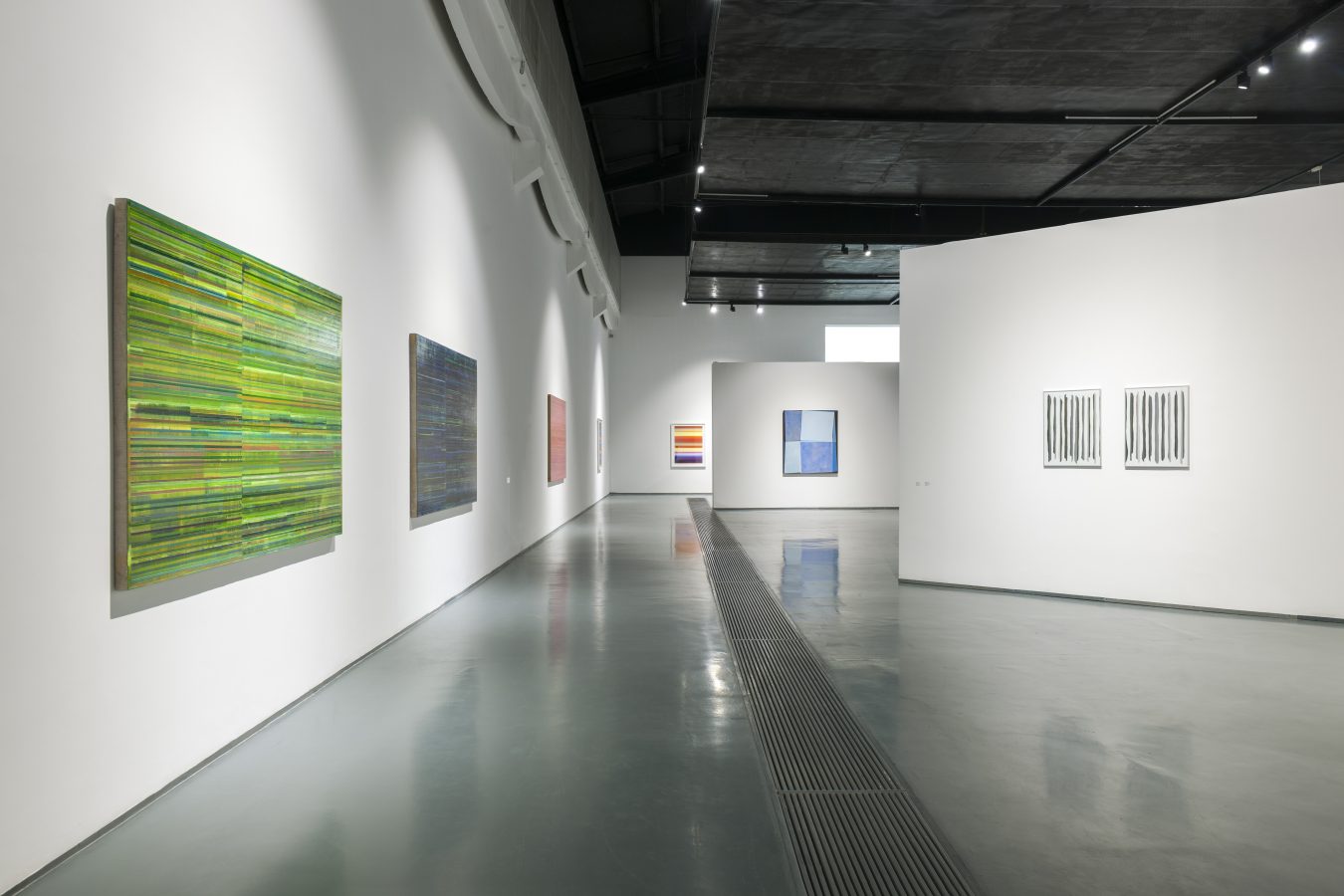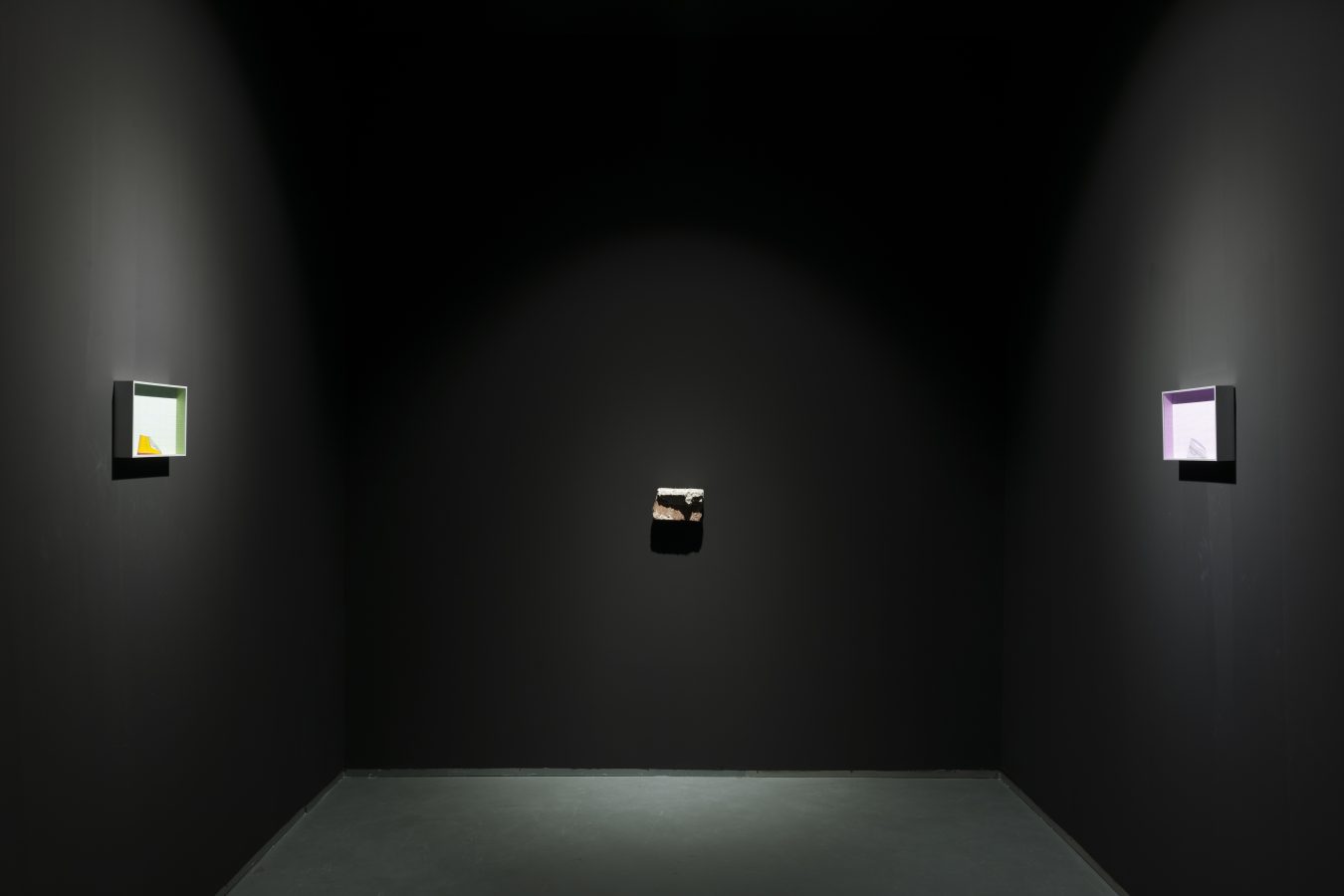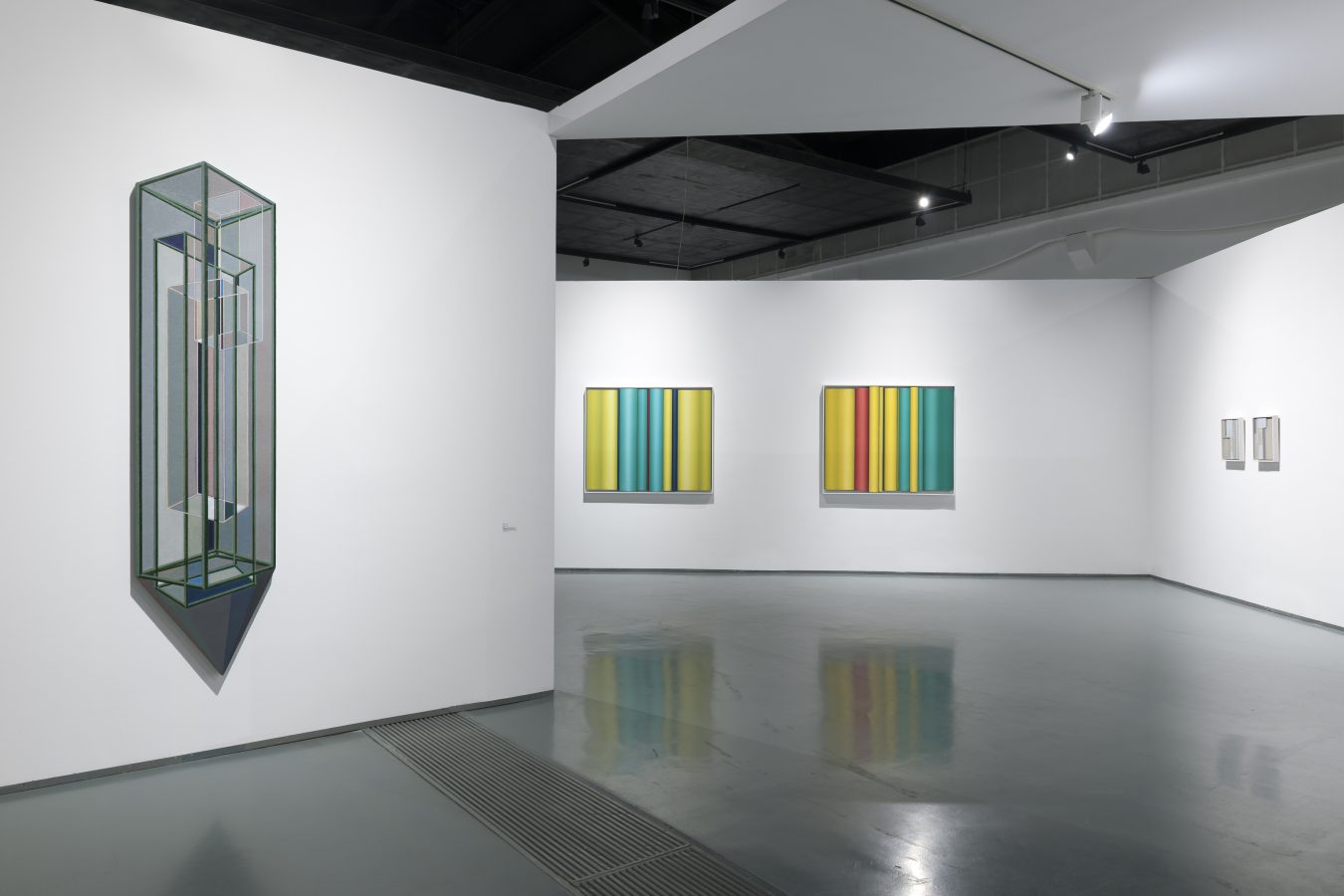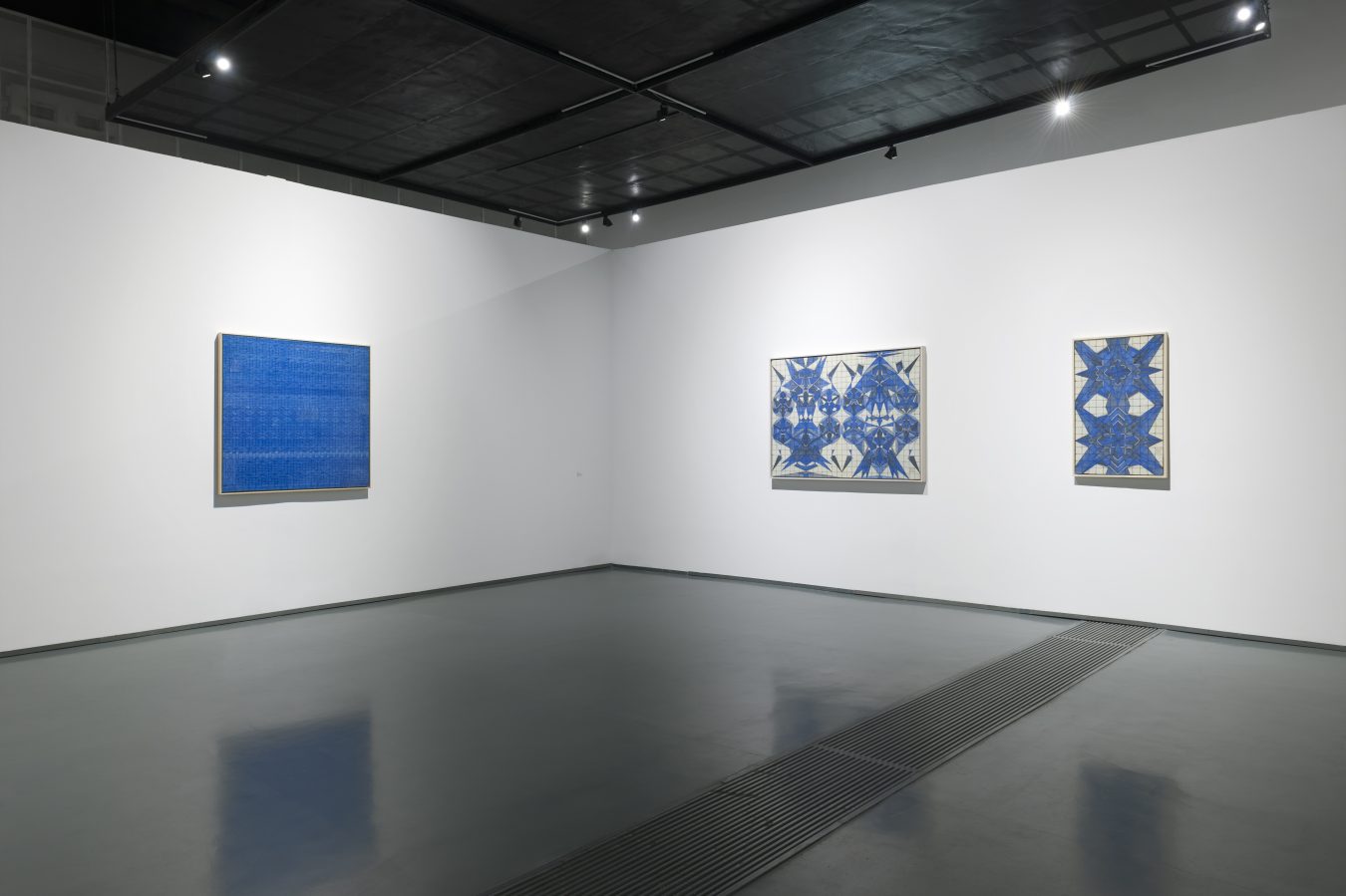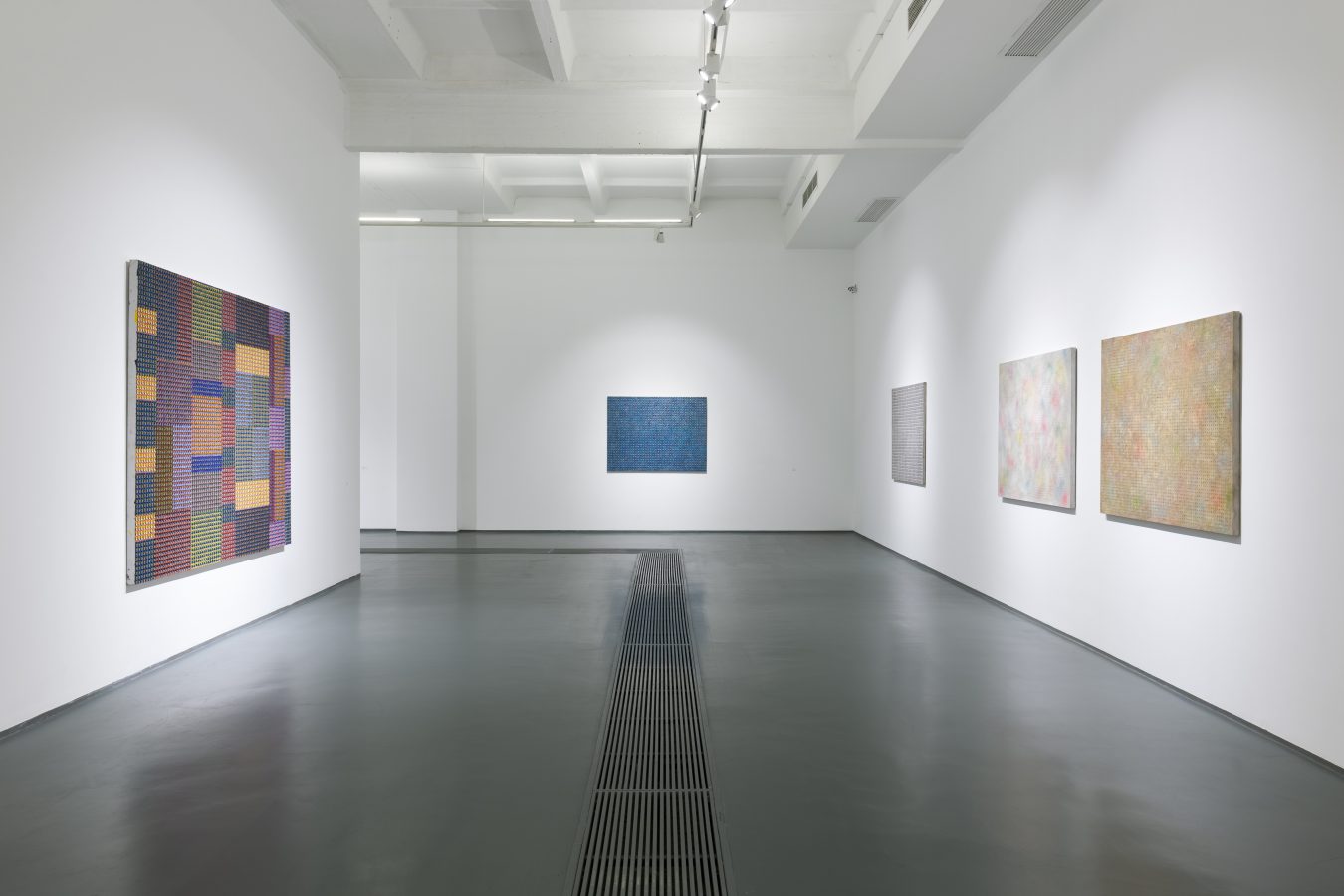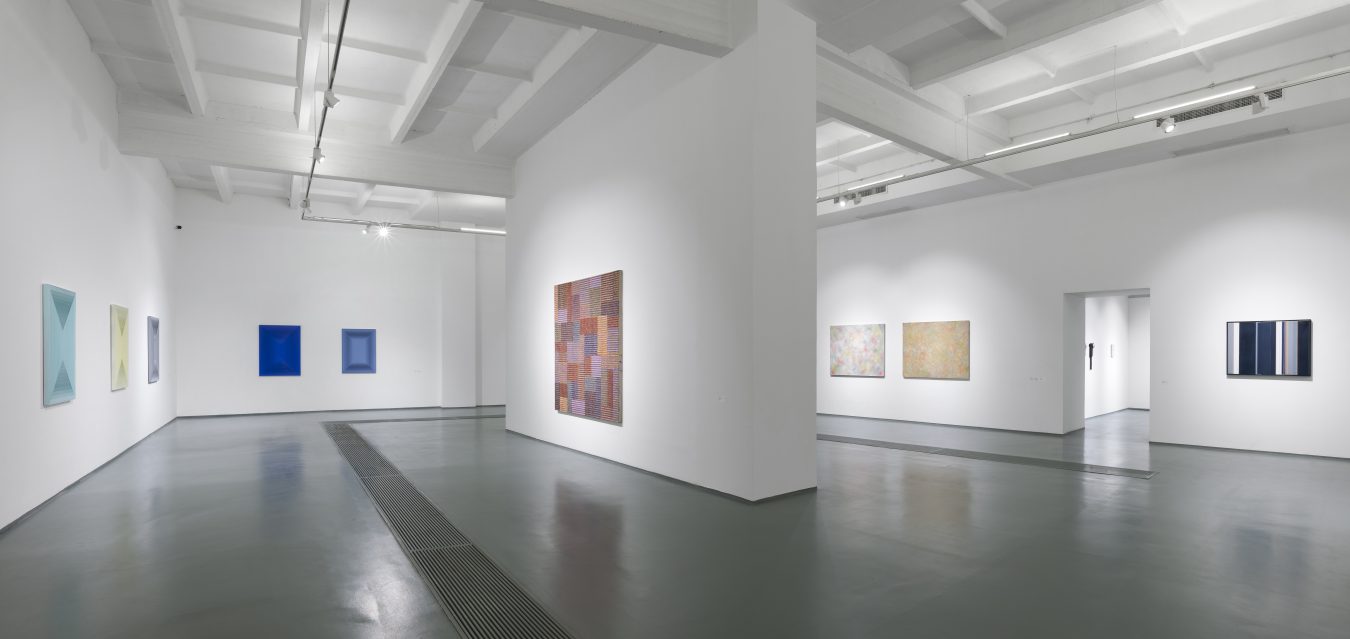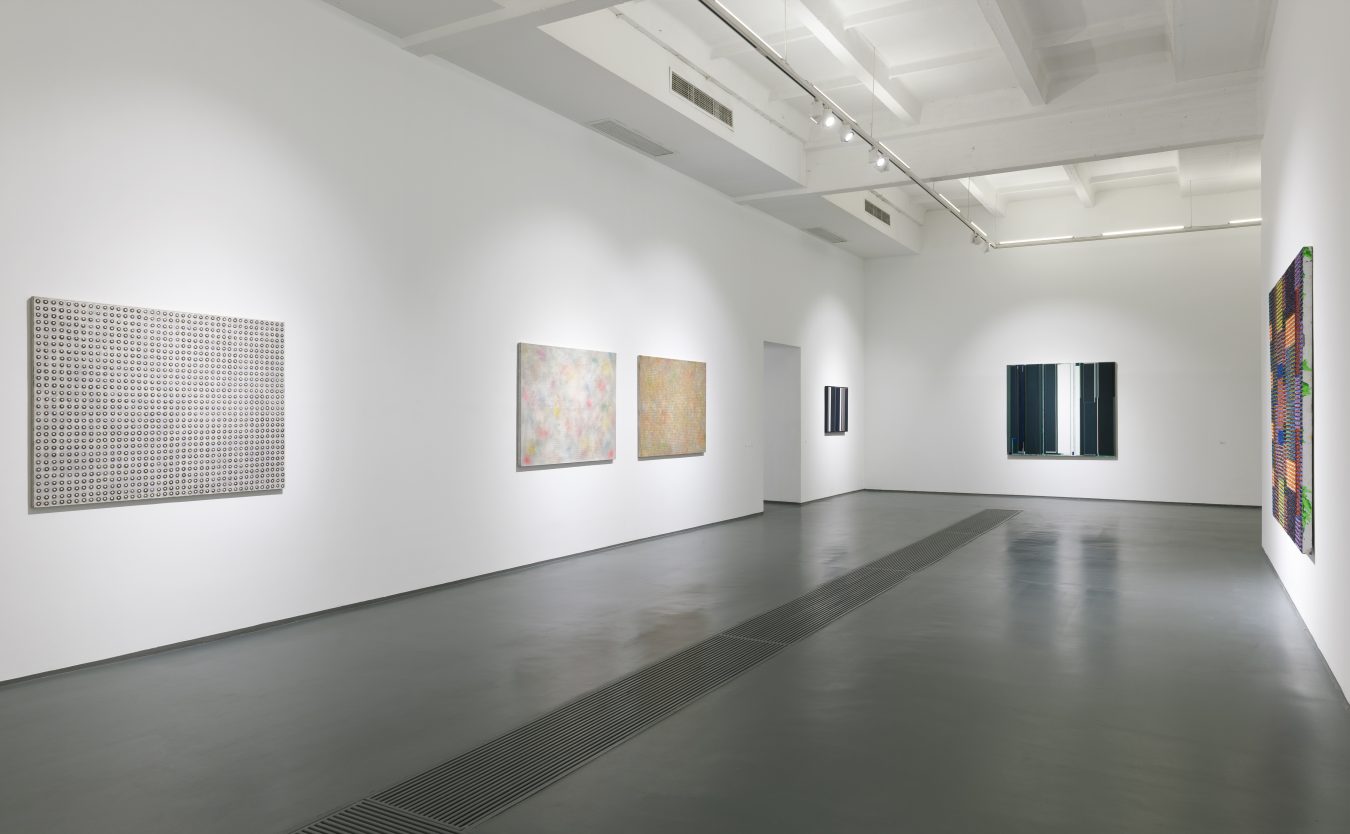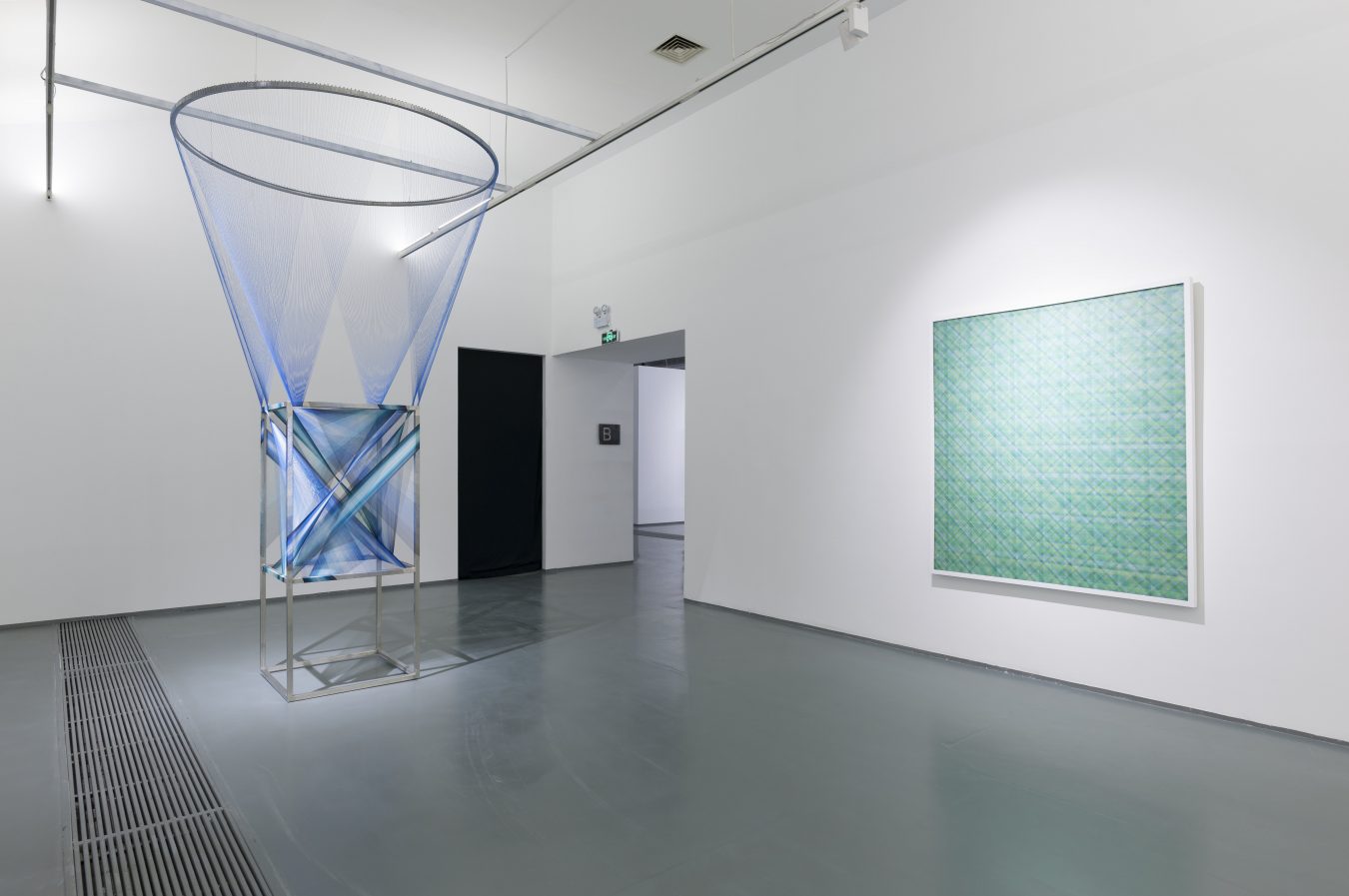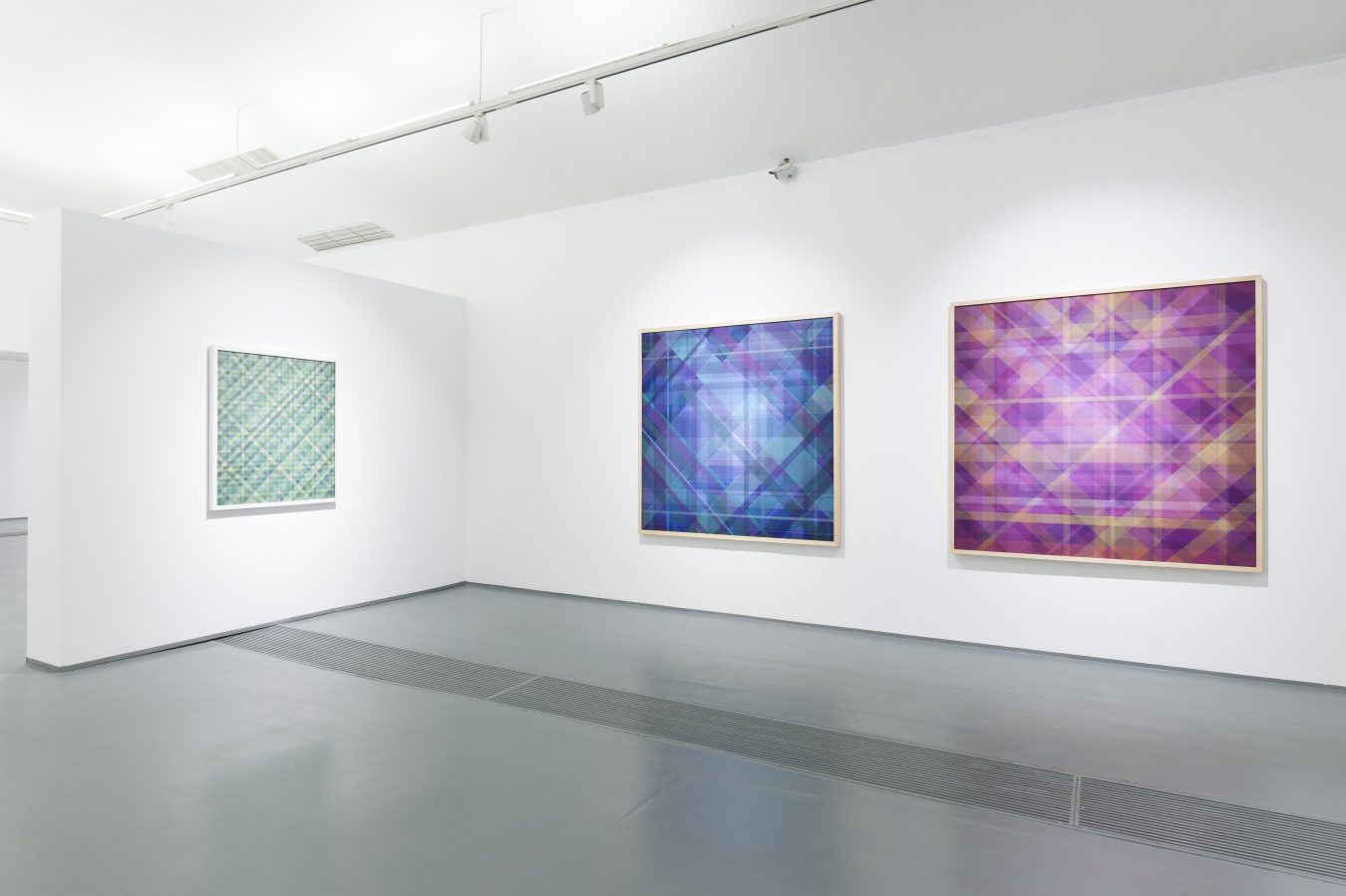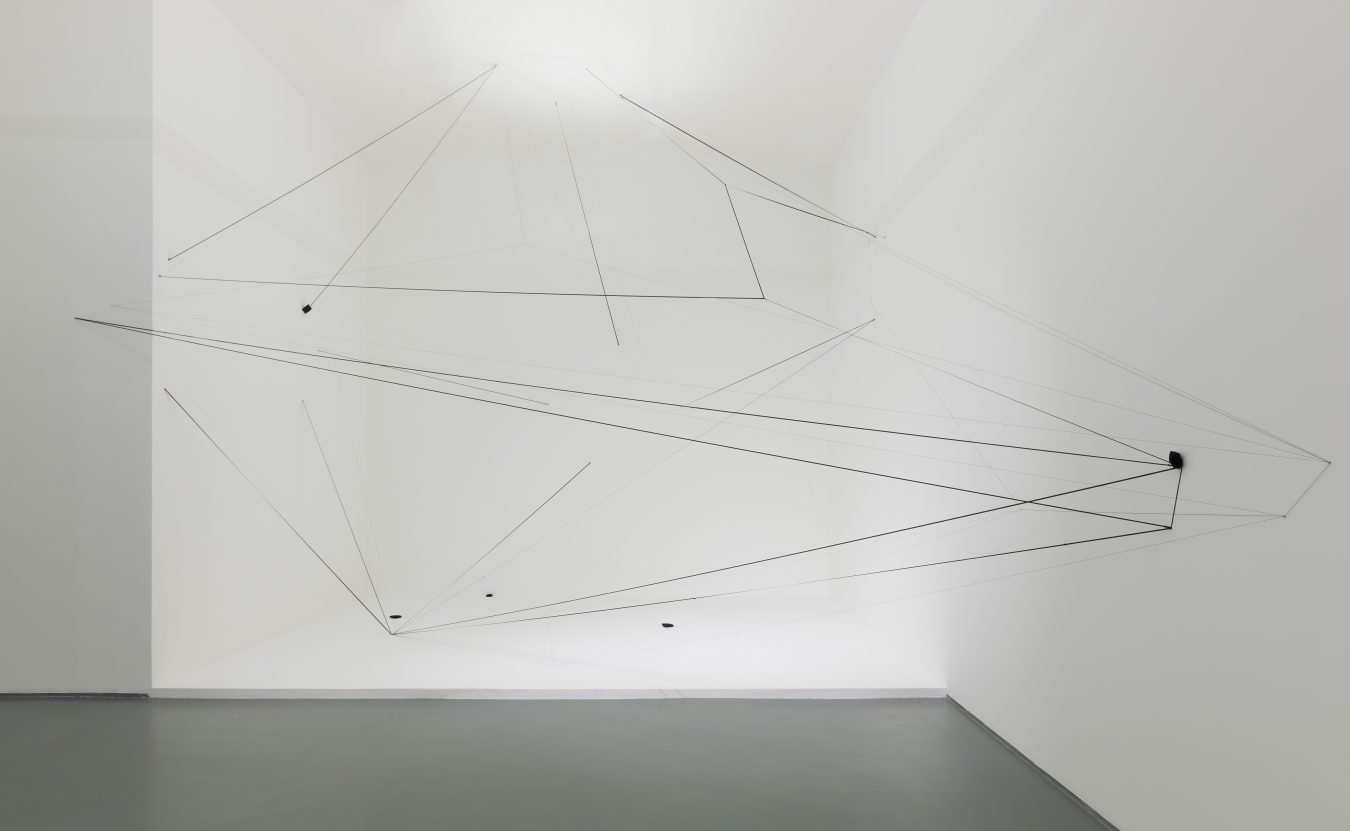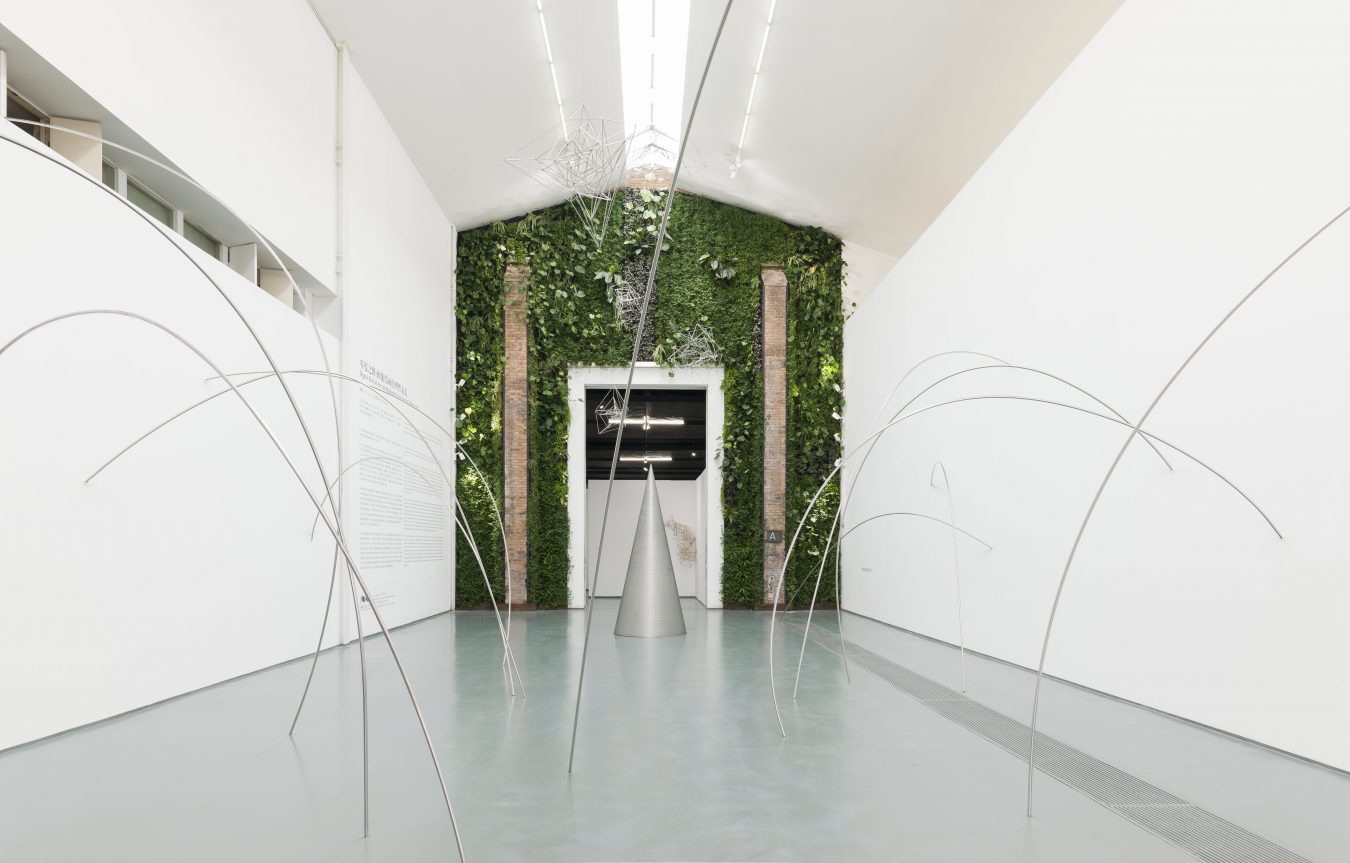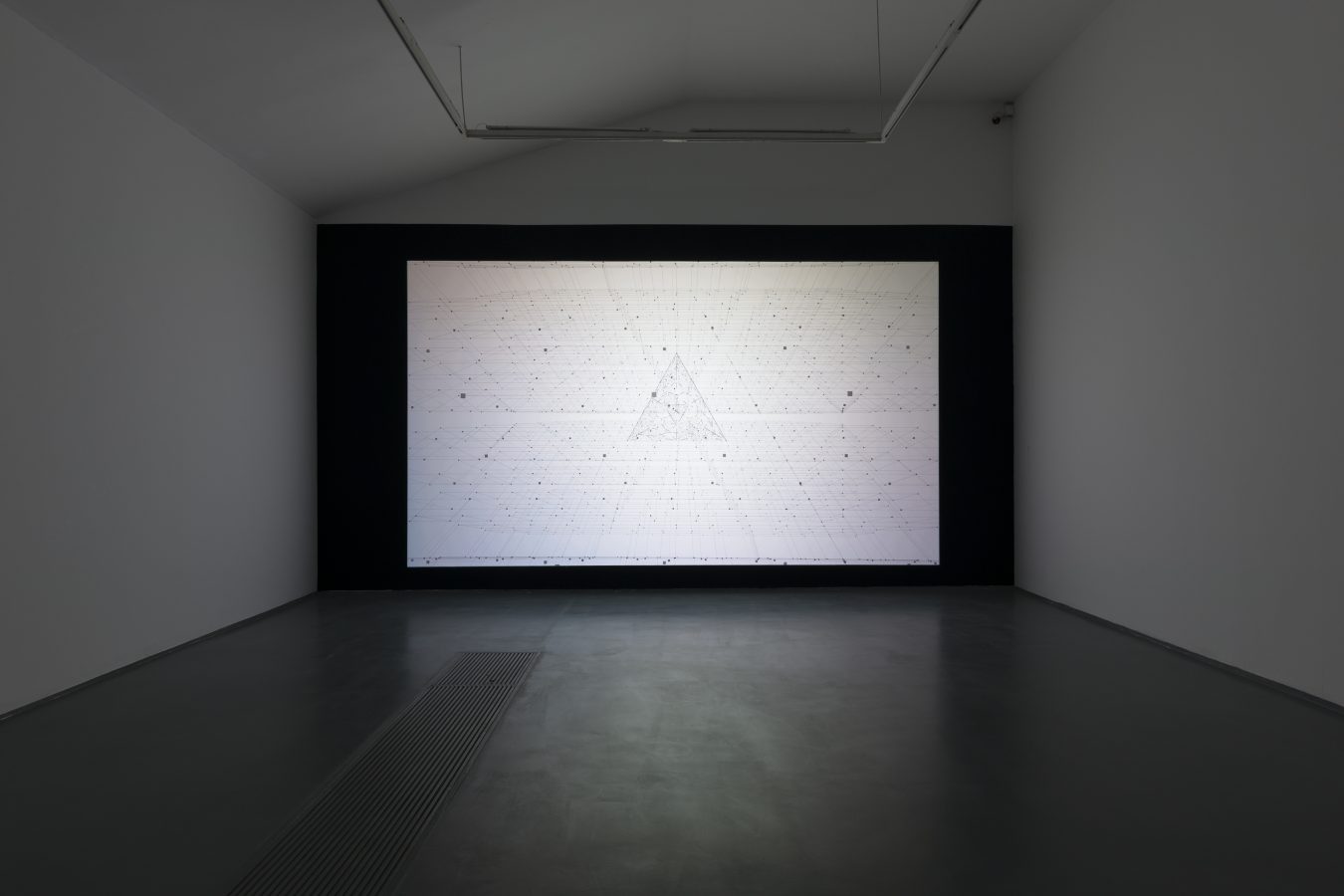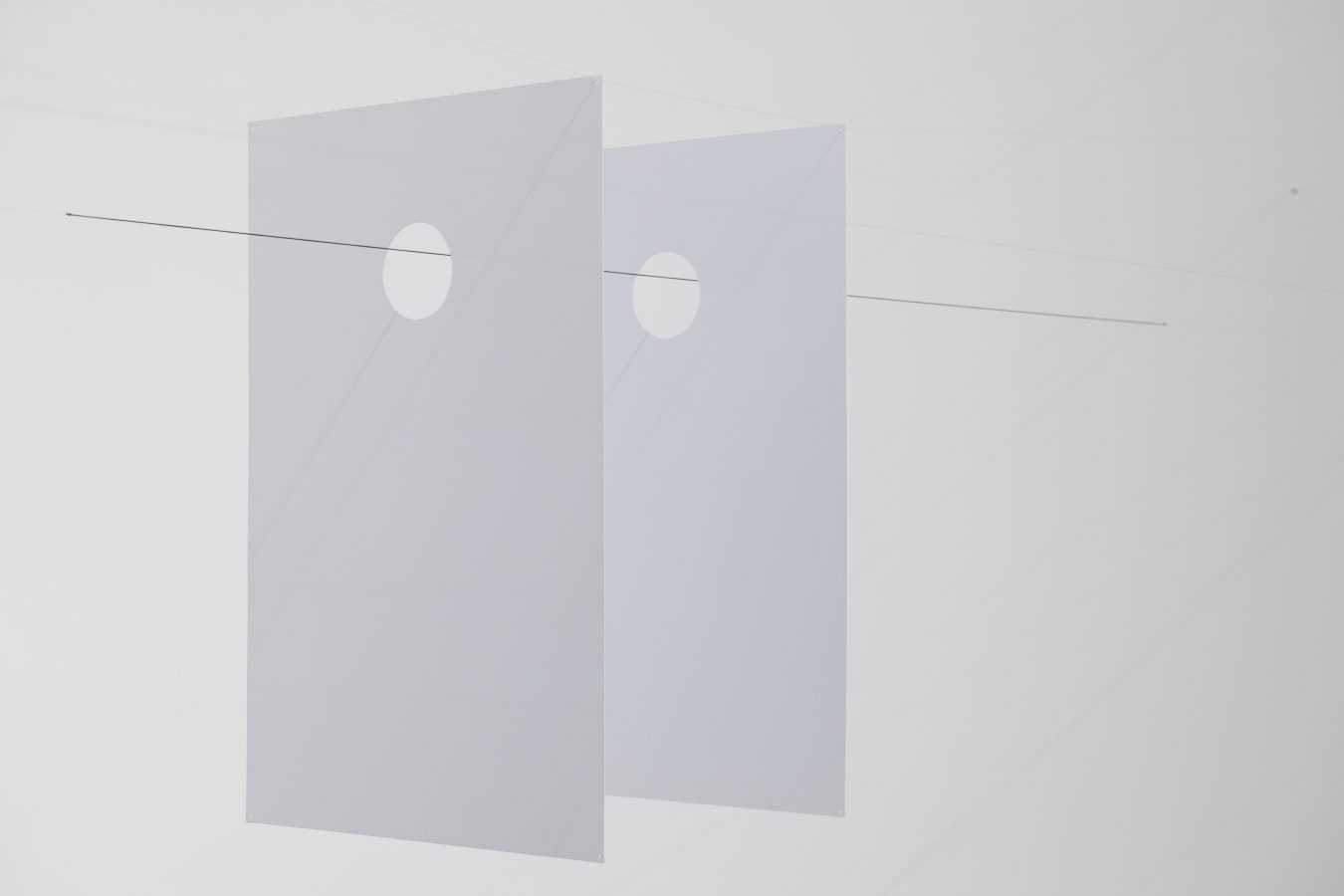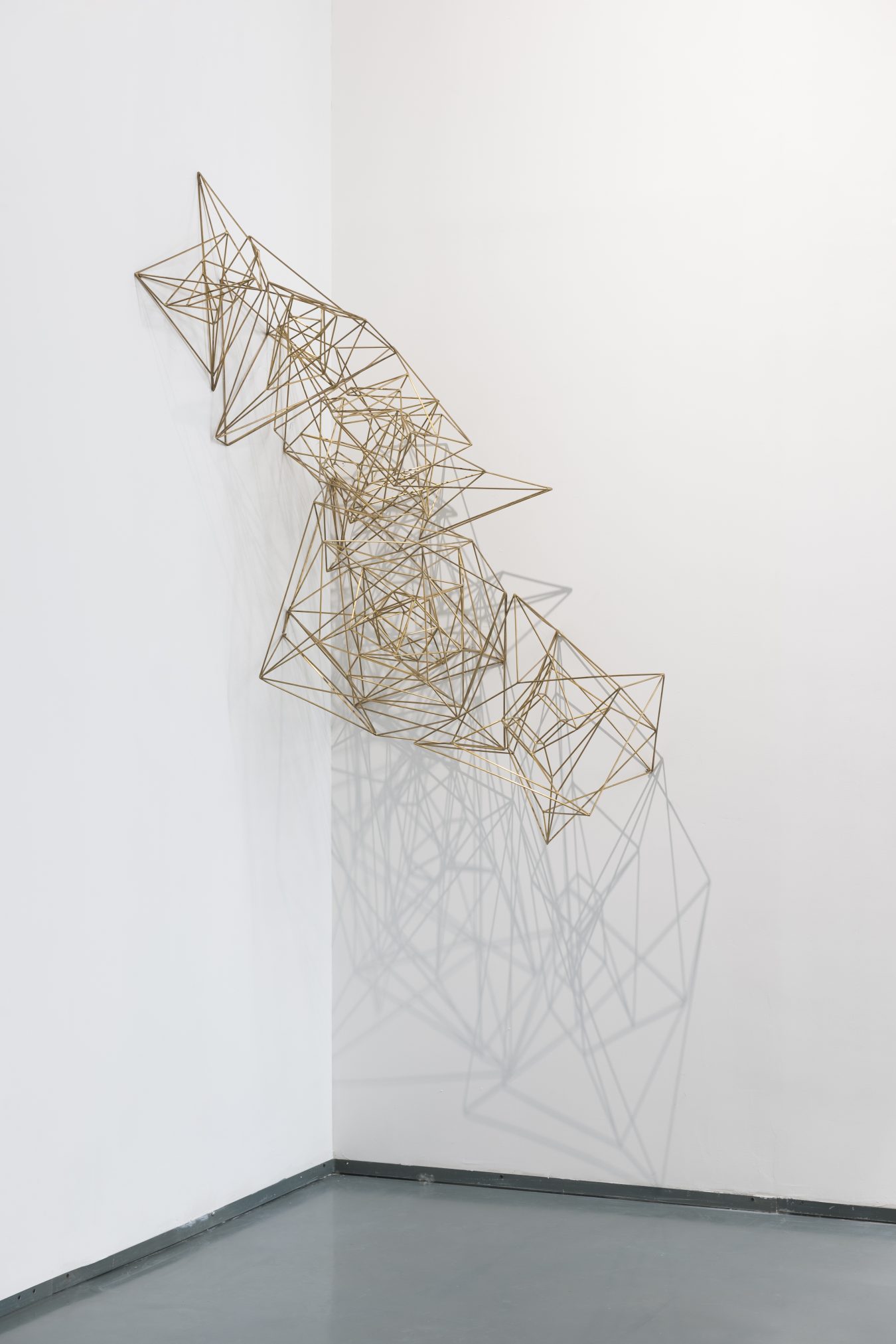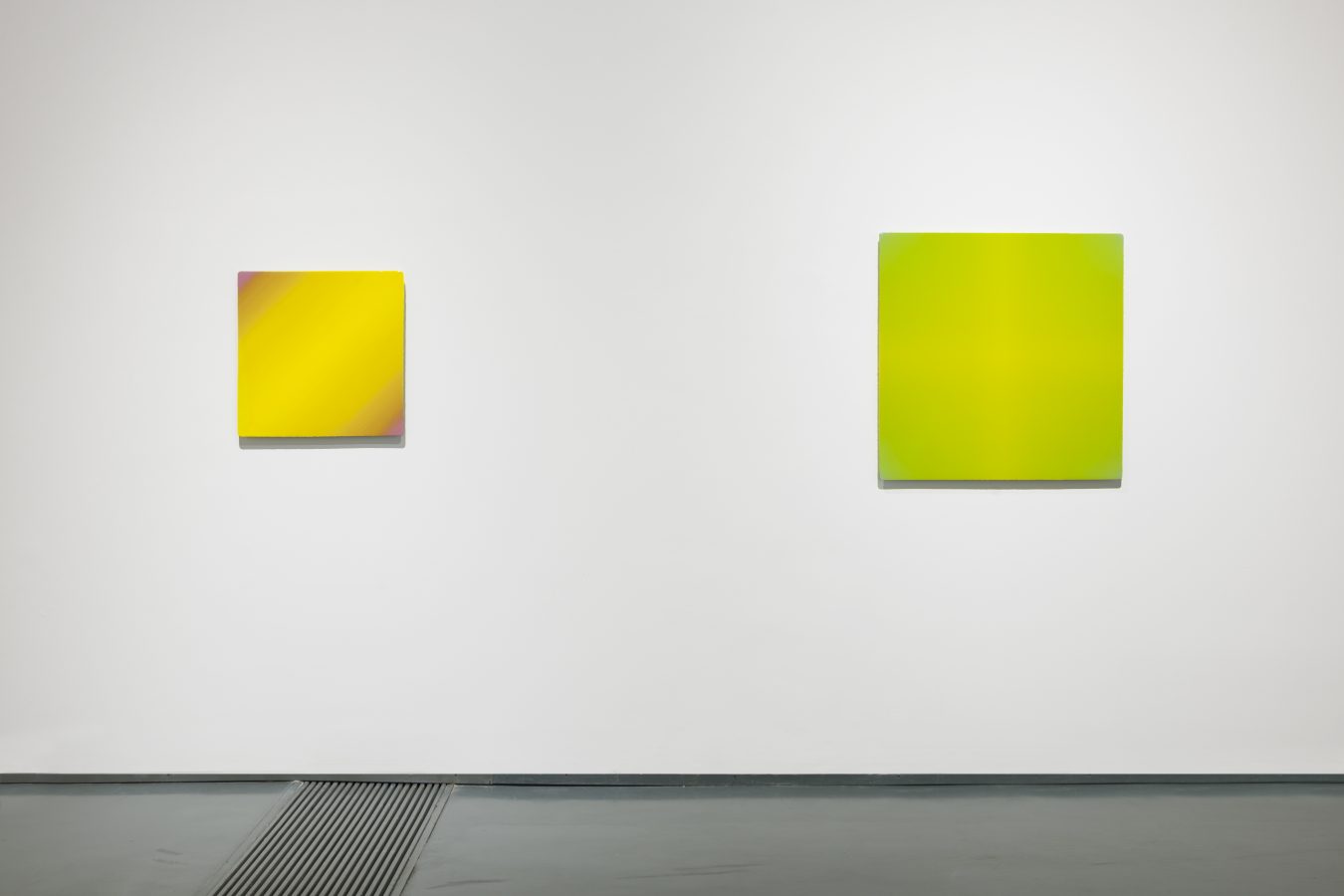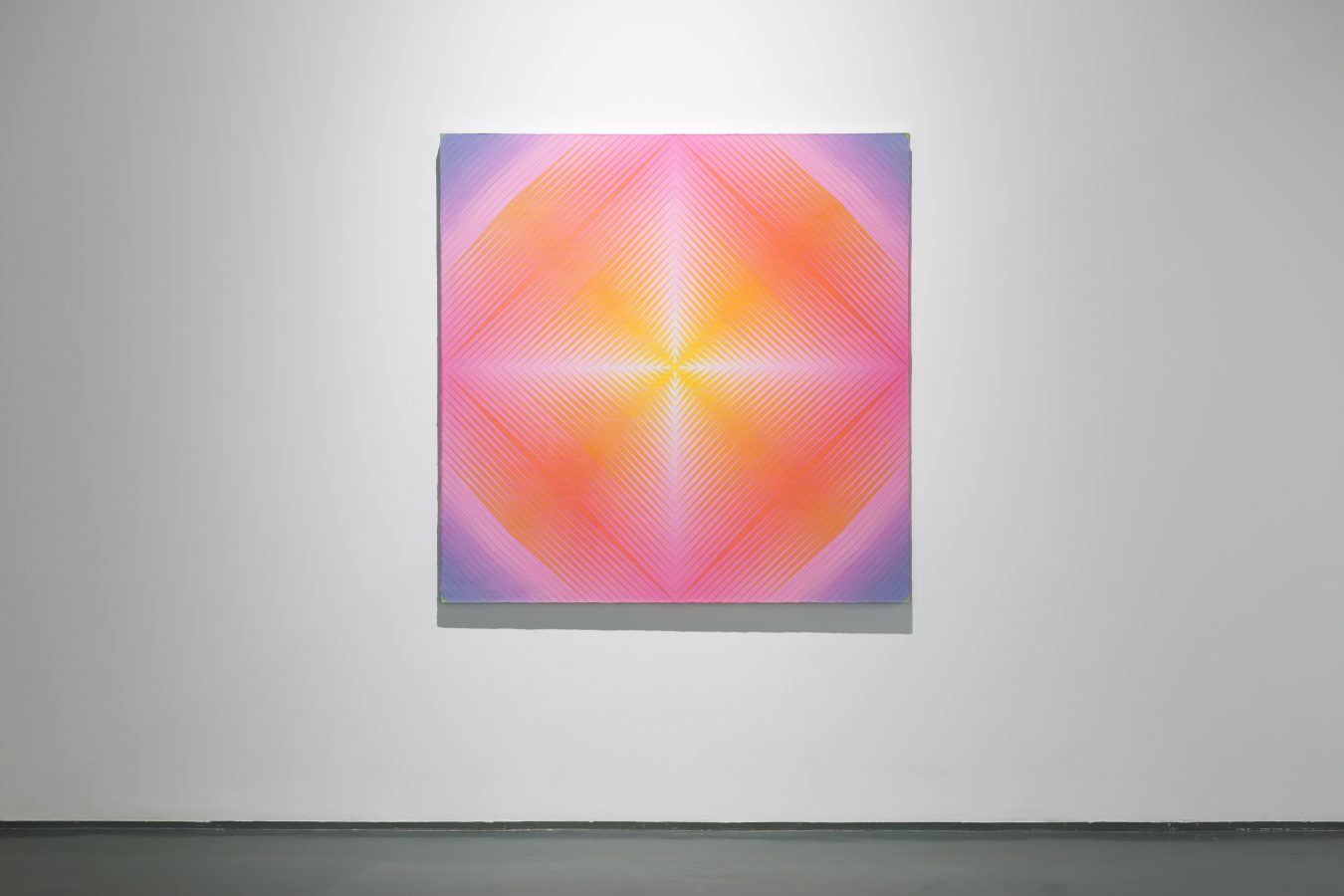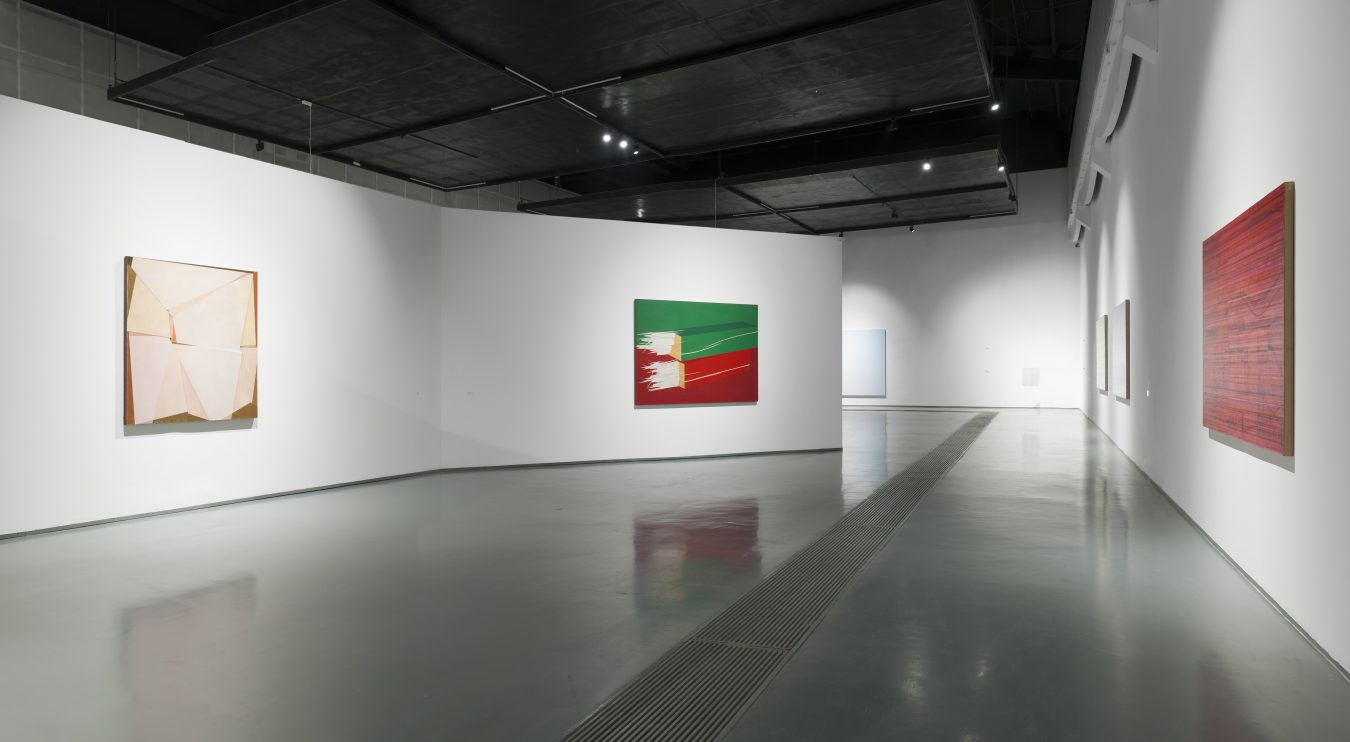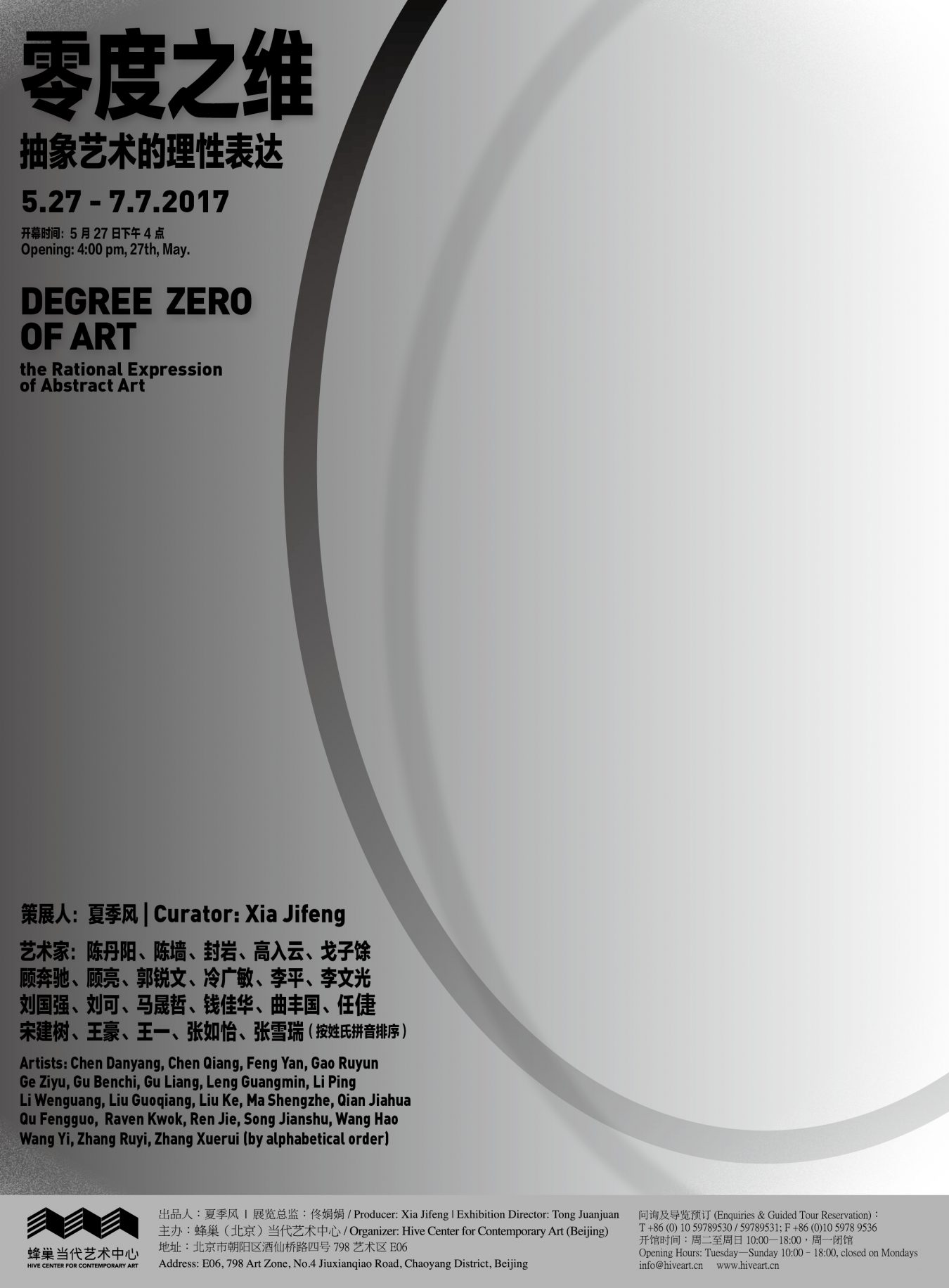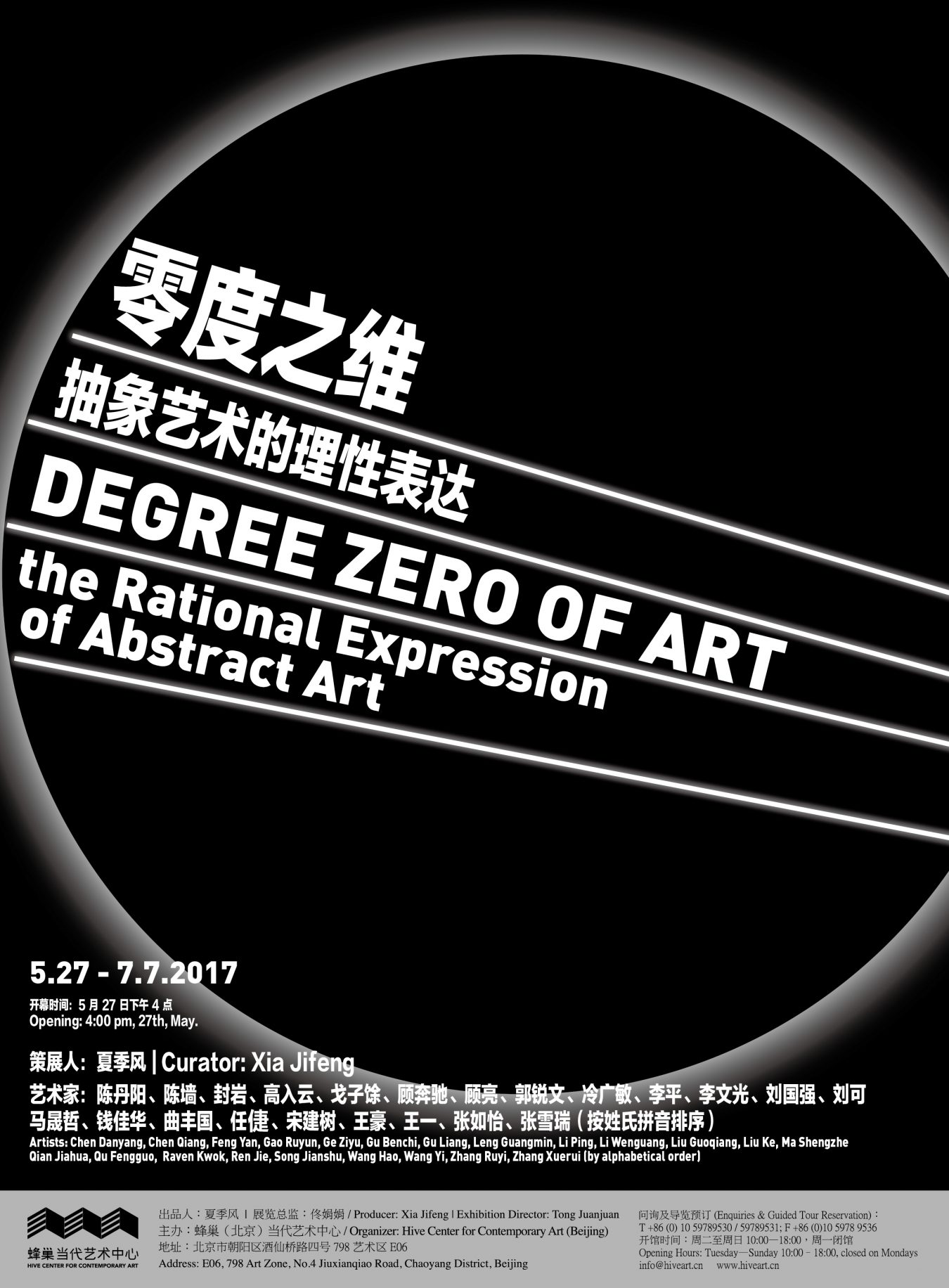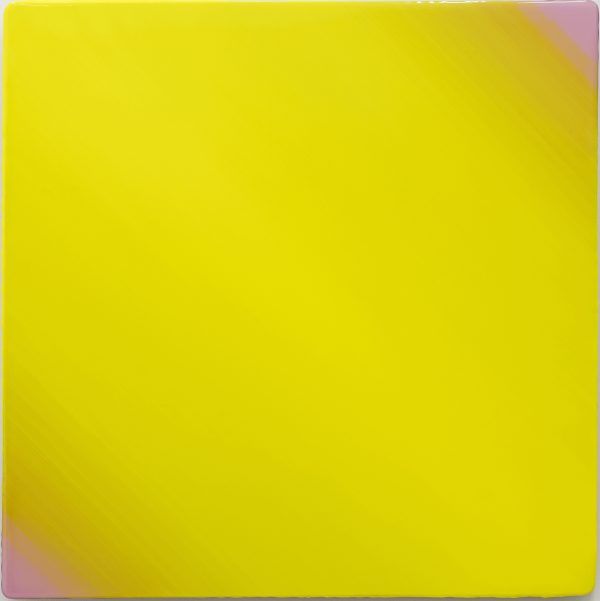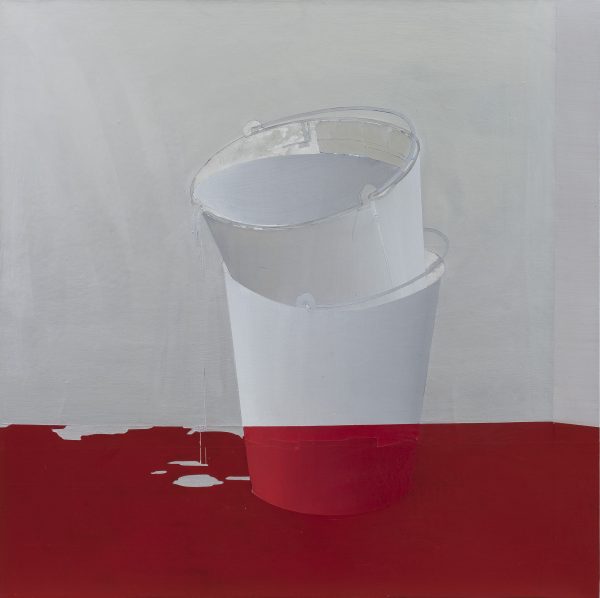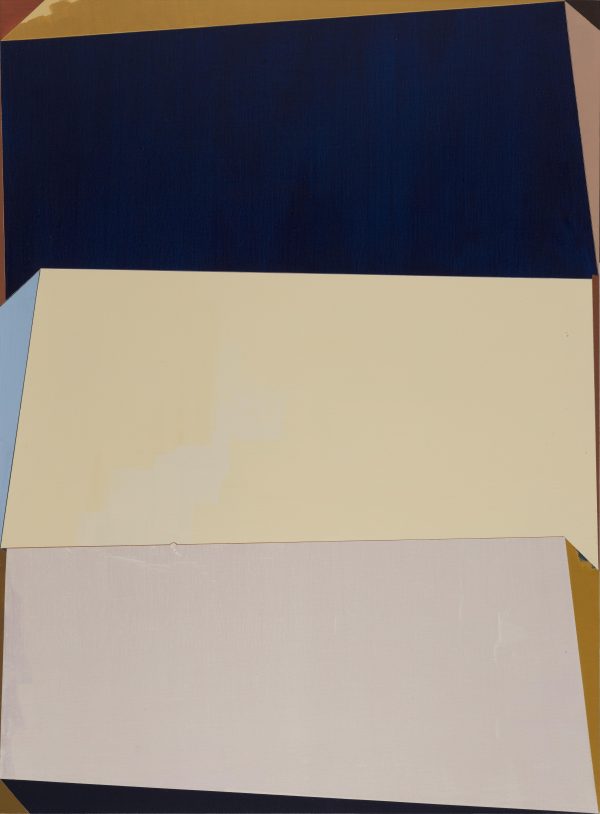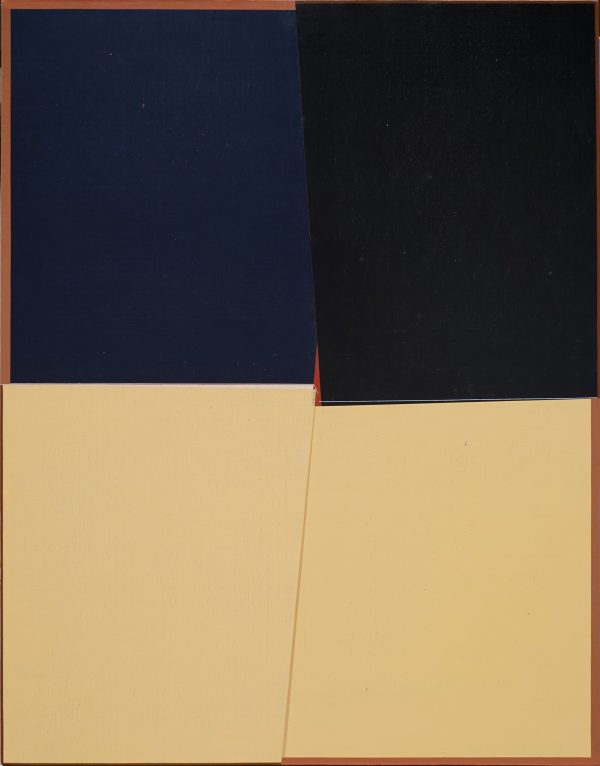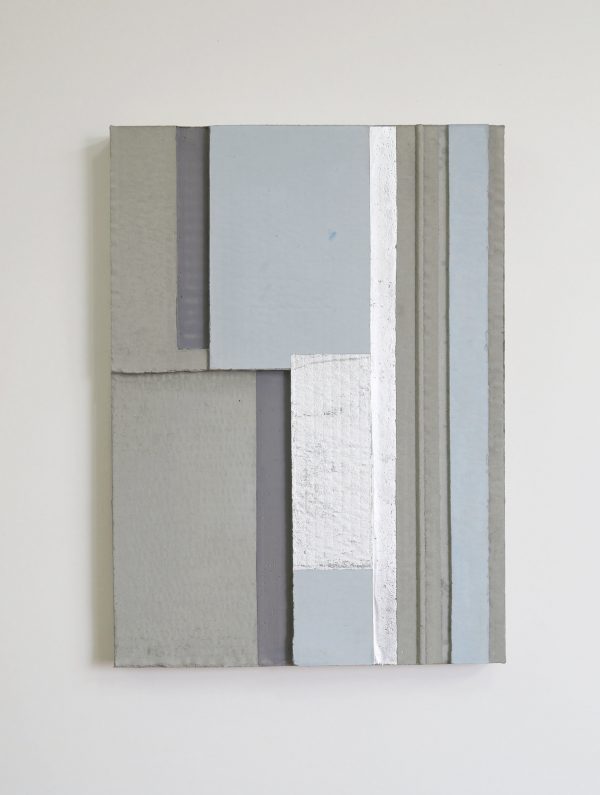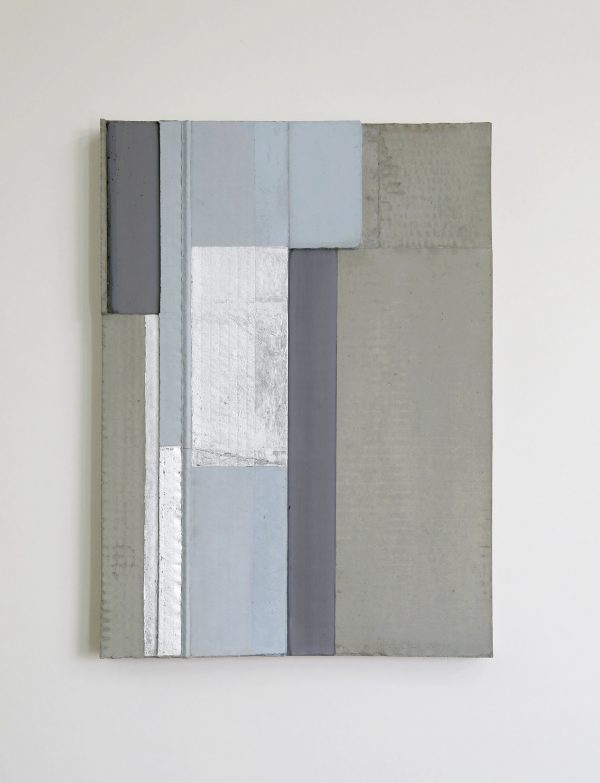Hive Center for Contemporary Art (Beijing) is pleased to announce the opening of Degree Zero of Art: the Rational Expression of Abstract Art on 27th May. 2017. Curated by Xia Jifeng, Degree Zero of Art invites 22 participating artists who work purely in Geometric Abstraction in such mediums as painting, installation, video and photography. Two years after Boundaries of Order, this is the next major exhibition at the Hive Center for Contemporary Art to examine Chinese Abstract art.
At the theoretical core of this exhibition is the concept of “zero writing” from French literary theorist Roland Barthes, which it employs in an attempt to sift through and present a direction and scene of relatively rational expression within contemporary Abstract artistic creation.
Barthes’ concept of zero writing comes from his 1953 book Writing Degree Zero. The basic idea is that when writing, the author strives to cast off all individual emotion and thus achieve a cold, objective, rational, even mechanical account, “an impassive mode of writing, innocent.” Meanwhile, zero emotion does not imply the loss of emotion in creation. To the contrary, it demands that the artist possess greater ability to recognize the world and to effectively adjust and control their own floods of subjective emotions, lowering their emotions to the freezing point so that reason can express the objective reality. It is not our intention to examine whether Barthes’ zero theory was influenced by Suprematist artist Kazimir Malevich, but we cannot deny that since Malevich’s creation of Geometric Abstraction painting, his work, with its unprecedented levels of rational expression, influenced the progression of Geometric Abstraction in Western art. The creative approach of Geometric Abstraction, sometimes called Cold Abstraction or Rational Abstraction, occupies an important position in art history. Much to the opposite of realist painting, Abstract painting focuses on painting itself, not subject matter, and stands as a substantive presence as it carries out self-replication and generation within the system. Not only is it not dependent on the true imitation of the likeness of nature, it must, as he said discard subject matter and appearance. Infinite uncertain but possibly extant internal relationships fill Abstract art with unlimited vitality. Malevich’s Geometric Abstraction, like Wassily Kandinsky’s Abstract Expressionism, is still one of the main two threads and origins of Abstract art today.
Compared to the vigorous growth of Abstract art in the West, its development has not gone so smoothly in China. Though beginnings of Abstract art could be seen in some oil paintings from the 1920s, such as certain works from the Storm Society and the Chinese Independent Artists Association, strictly speaking, these creative practices belonged instead to such styles and schools as Post-Impressionism, Cubism, Symbolism and Fauvism. The aesthetic leanings and formal techniques of Chinese art have continued to evolve, with many schools and ideas bursting forth in great waves, but unchanging realism has always held the dominant position. Even during the 85 New Wave art movement, some artists were using forms that resembled, but did not equate to, Abstraction, to establish the school known as “Rational Painting,” which evidently had many small differences from the concepts and theories of Western Abstract art, and was much closer to the early modernist art of the West. The discussion and practices within only had some Abstract leanings. With the acceleration of modern technological development and changes in the social environment, especially the experience of the age of mechanical industry and an information era where computers serve as tools and means, a colder, more generalizing, refined and simplified creative method is now rising in Chinese contemporary art. The rational expression of Abstract art is growing more widespread as a phenomenon and creative approach. Such creations that follow this thread of Geometric Abstraction can be traced back to the aesthetics advocated by Malevich and Piet Mondrian, but also correspond to Barthes’s theory of “zero writing.”
Two years after Boundaries of Order, this is the next major exhibition at the Hive Center for Contemporary Art to examine Chinese Abstract art. Unlike Degree Zero of Art, Boundaries of Order focused on 32 Chinese artists around the world who use Abstraction as a creative means, beginning in the 1920s to trace a non-figurative, decreasingly realist path of Abstract art in China, and featured the two threads of expressive “warm Abstraction” and geometric “cold Abstraction.” Degree Zero of Art, on the other hand, invites 22 participating artists who work purely in Geometric Abstraction in such mediums as painting, installation, video and photography. As the exhibition is unable to cover all of the Abstract artists who express through rational means, it sets its sights on the younger artists, because this generation tends to have much broader linguistic and material practices of rational expression in Abstract art. Furthermore, the multiple directions of possibility presented in their works seem to better fit the developmental trends and shifts in globalized Abstract art.
